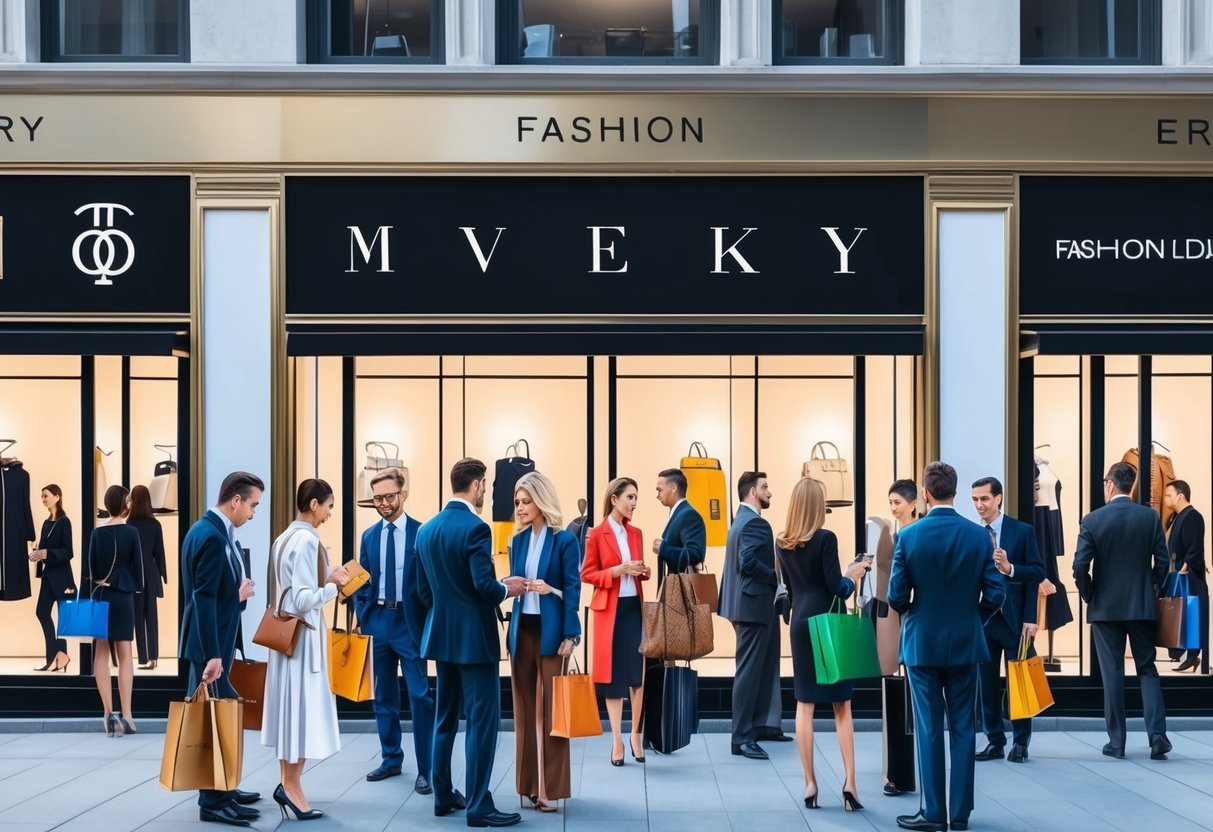
Identifying Trends in Resale Demographics
The fashion resale market is being shaped by shifting consumer demographics and preferences. Understanding these shifts is crucial for spotting where luxury brands and investments will see the most growth and retention in value.
Influence of Gen Z Buyers
Gen Z is driving substantial changes in the secondhand market, with a clear preference for sustainability, value, and digital discovery. According to recent fashion resale data, over 42% of Gen Z and Millennials are willing to buy secondhand items — a much higher rate than previous generations.
This age group values circular fashion, making them instrumental in the rise of resale platforms. Brands such as Nike, Levi’s, and Zara have become highly popular with Gen Z buyers, who often lead trends in what holds resale value for short-term and long-term investment.
Their willingness to embrace thrifted luxury brands—especially those with strong social media visibility—has directly influenced which labels see higher demand and rapid resale turnover. Gen Z’s purchasing decisions are heavily influenced by transparency, ethics, and community-driven trends.
Platforms that emphasize authentication, sustainable practices, and peer recommendations stand out. This demographic sees resale not only as a means to obtain high fashion for less, but also as a smart investment strategy in brands that retain or increase their value, according to insights from a 2024 luxury resale market report.
Gender and Age Preferences
Resale market trends show specific gender and age patterns affecting demand for high-end brands and collectibles. While younger women have historically driven much of the fashion resale growth, there is an increasing interest from men, especially in categories like sneakers, watches, and streetwear.
Men in their 20s and 30s are now significantly contributing to the luxury resale boom, often seeking limited edition releases or high-demand collaborations for both collection and investment. Women, particularly those aged 18–35, continue to favor handbags, jewelry, and ready-to-wear pieces from established labels.
These patterns mean luxury brands with unisex appeal or exclusive drops tend to see higher overall resale value. Brands that cater to diverse age groups or offer classic, enduring styles—such as Chanel handbags or Rolex watches—maintain their demand across demographic lines.
This convergence signals growing awareness that age and gender diversity creates broader investment opportunities in the secondhand luxury market, supported by detailed resale statistics.
Marketplace Analysis: Where to Buy and Sell for Maximum Profit

Choosing the right marketplace directly impacts your profit margins when reselling luxury, designer, or trending fashion brands. Each platform specializes in different audience types, fee structures, and verification methods, so understanding these specifics is vital for optimizing your returns.
the realreal
The RealReal is a leading authenticated luxury resale marketplace. It focuses on designer brands such as Chanel, Gucci, and Louis Vuitton, offering buyers confidence through in-house authentication.
This significantly reduces risks of counterfeits and builds trust with high-value shoppers. Sellers benefit from a managed consignment model where The RealReal handles pricing, photography, authentication, warehousing, and fulfillment.
Although commission fees are higher compared to peer-to-peer platforms, sellers often gain access to a more affluent and international customer base. Items that are rare or in high demand tend to sell quickly, making it a preferred option for those aiming to resell high-value pieces with minimal hassle.
For those tracking designer resale value trends, The RealReal also provides analytics on the brands and items with the highest turnover rates. This helps sellers focus on top-performing categories.
poshmark
Poshmark is a prominent peer-to-peer fashion resale platform with broad reach in the US and Canada. Unlike managed resellers, Poshmark empowers individuals to list, price, and sell items directly to buyers, creating a highly social marketplace environment.
The platform supports a wide range of brands, from mid-tier fashion labels to select luxury designers. Sellers are responsible for product photos, descriptions, and customer service, which allows for flexibility in pricing and negotiation.
Transaction fees are typically 20% for sales over $15, making it competitive for lower- to mid-priced items. A key advantage of Poshmark is the ability to tap into trends quickly—for example, resellers can immediately list items from sought-after brands as soon as they are acquired.
Community features like “virtual closets” and “Posh Parties” enhance discoverability and foster buyer engagement. See more on top-performing clothing brands for resale on this detailed analysis.
Auction Houses
Auction houses, such as Sotheby’s and Christie’s, represent a premium option for selling rare or highly valuable fashion items. These platforms are best suited for investment-grade designer pieces, vintage collectibles, or limited-edition items with significant provenance.
Listing with an auction house involves a comprehensive appraisal and authentication process. Unlike online marketplaces, auctions offer the potential for competitive bidding, which can drive prices above standard resale market values—especially for items with historical or celebrity significance.
Sellers should be aware of higher entry barriers, including consignment fees and scheduled auction dates, which can make the process slower than online methods. However, for certain items, the added prestige, professional handling, and access to a global network of collectors and serious buyers provide advantages that are hard to match in other resale channels.



